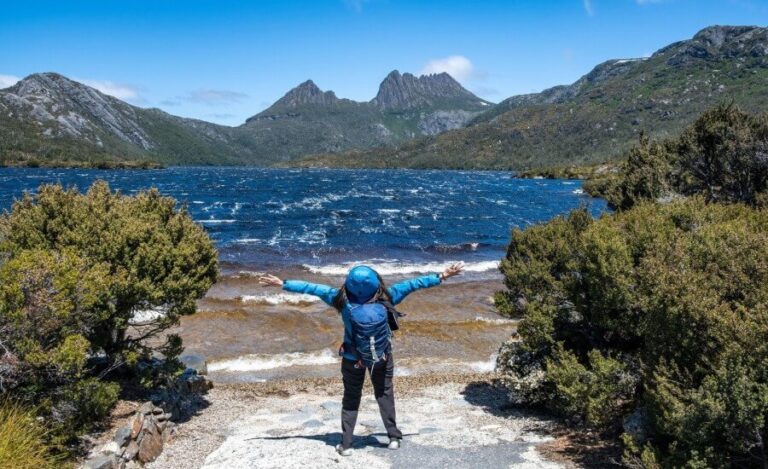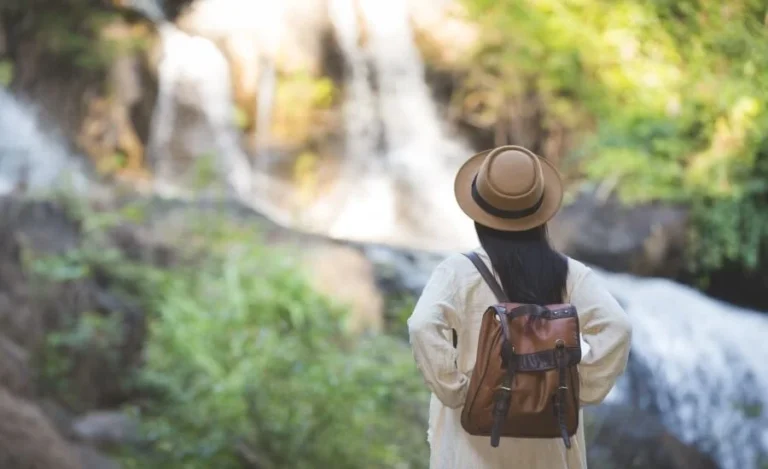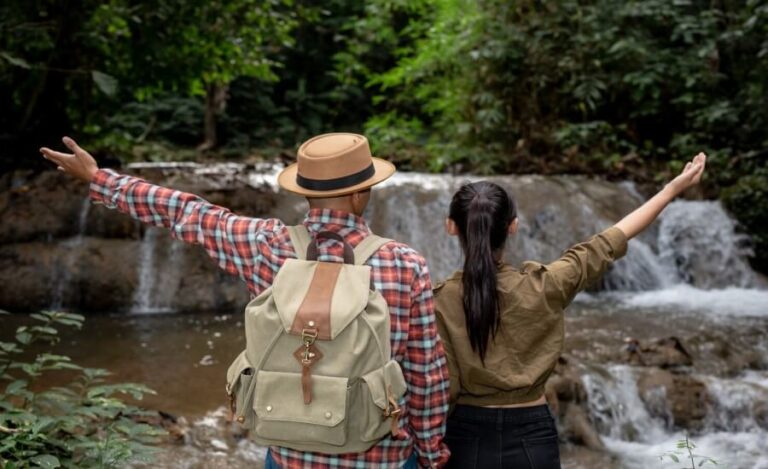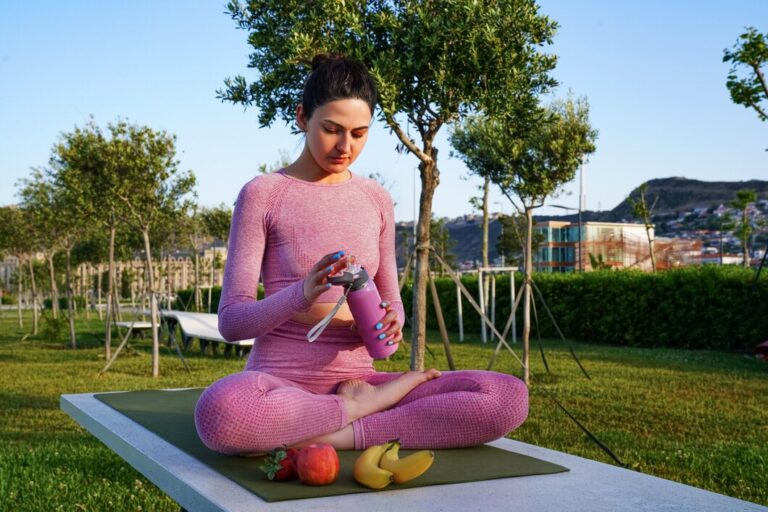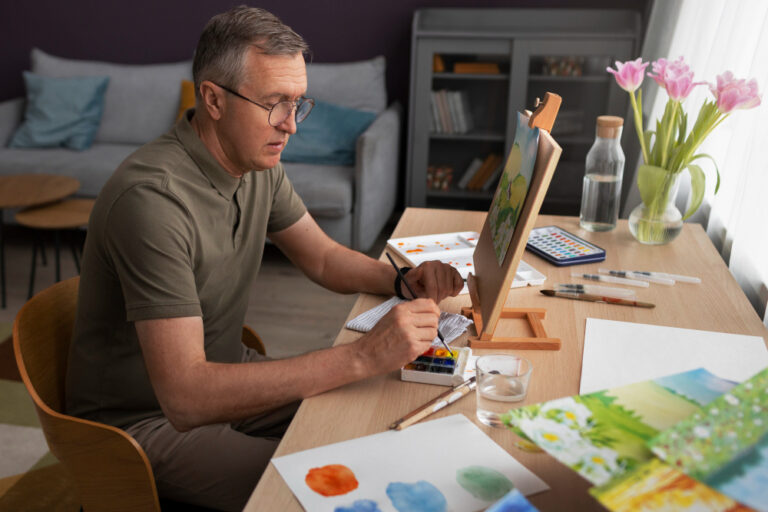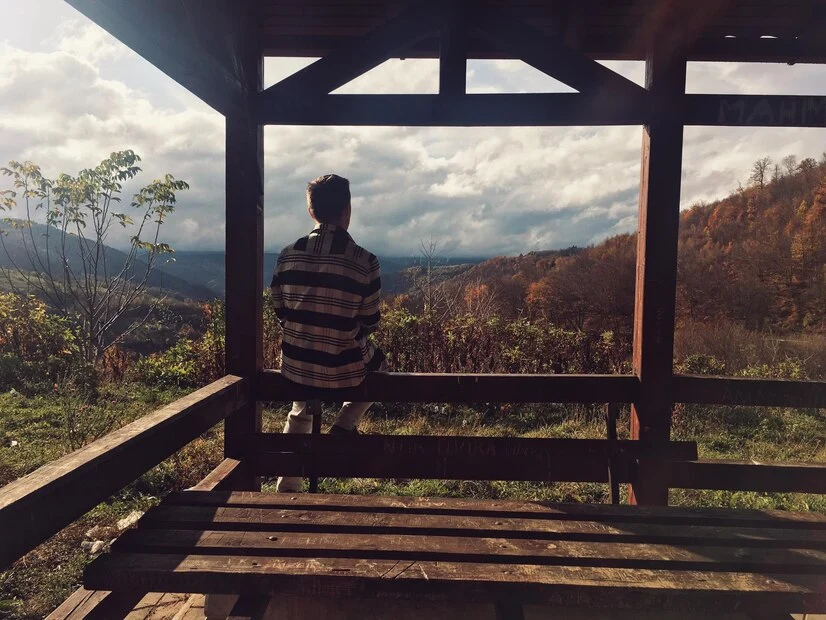
Does the weekend sometimes arrive feeling less like a refreshing pause and more like a brief intermission filled with errands, screen time, and the vague longing for… something more? We dream of epic escapes to distant lands, scrolling through images of far-flung adventures, yet feel constrained by limited time, budgets, or energy. The pressure to make weekends ‘count’ can paradoxically lead to paralysis, leaving us feeling restless and stuck in the same old routines, watching the precious hours slip away on the sofa or through a glowing screen.
But what if adventure wasn’t something requiring weeks of planning, expensive flights, or exotic destinations? What if meaningful escape and mindful presence could be found right outside your doorstep, tucked into the corners of your ordinary weekend? Enter the micro-adventure: short, simple, local, affordable, yet genuinely refreshing escapades designed to inject novelty and mindful awareness into everyday life. This guide explores Why Micro-adventures Are the Key to Weekend Mindful Travel, revealing how these accessible journeys can break the routine, foster presence, and become a powerful tool for cultivating a travel mindset without ever leaving your local area.
What Exactly is a Micro-adventure?

Coined and popularized by adventurer Alastair Humphreys, a micro-adventure encapsulates the spirit of adventure scaled down to fit into our busy lives. It’s about challenging ourselves, exploring our local surroundings, and finding novelty nearby. The defining characteristics make them uniquely accessible:
- Short: Designed to fit easily into free time, like an evening after work, a single day, or across a weekend. No vacation days required.
- Simple: Low-cost or free, requiring minimal gear and planning. The emphasis is on action, not complex logistics.
- Local: Taking place close to home, utilizing nearby parks, rivers, hills, forests, or even unexplored corners of your own town or city. Reduces travel time and environmental impact.
- Achievable: Realistic for people of varying fitness levels and experience. The challenge is often more about breaking routine than extreme physical exertion.
- Refreshing: Designed to provide a genuine break, a dose of nature, a shift in perspective, and a sense of accomplishment, however small.
Think sleeping under the stars on a nearby hill, cycling a local route you’ve never explored, swimming in a local river or lake, exploring a patch of woodland after dark, walking a section of a coastal path, or even just deliberately exploring an unfamiliar neighborhood in your city on foot. It’s about embracing an adventurous mindset within the constraints of everyday life. It proves that escape and discovery don’t require crossing continents; they often just require crossing the threshold with intention.
The Perfect Pairing: Why Micro-adventures Foster Mindful Travel

Micro-adventures and mindful travel are natural companions. The inherent simplicity and local nature of these small escapes create fertile ground for cultivating presence, awareness, and a deeper connection with your immediate world – core tenets of mindful travel, applicable even close to home.
Firstly, the novelty factor within familiar territory sharpens your senses. Exploring a local park from a different entrance, walking a familiar street at dawn, or visiting a nearby wood you’ve never entered forces you to see your surroundings with fresh eyes. Without the overwhelming stimulus of a completely foreign environment, you can focus more easily on the subtle details – the quality of light, the sounds of local birds, the texture of a path. This ‘close-to-home’ novelty encourages present-moment awareness in a way that grand, complex trips sometimes don’t, as logistics can often overshadow experience.
Secondly, the simplicity reduces cognitive load, freeing up mental space for mindfulness. With minimal planning, packing, and decision-making involved, your mind is less cluttered with travel anxieties or logistical juggling. This mental quietude allows you to be more receptive to your sensory experience and internal state. You can focus on the rhythm of your walking, the feeling of the breeze, the simple joy of being outdoors, rather than worrying about flight connections or hotel reservations. It strips travel back to its experiential core.
Thirdly, micro-adventures inherently encourage connection with your local environment. Whether it’s learning the names of local trees, discovering a hidden viewpoint in your city, or simply appreciating the changing seasons in your nearest green space, these small journeys foster a sense of belonging and stewardship. This connection to place is a fundamental aspect of mindful travel – understanding and appreciating where you are, right now. Have you ever truly explored the natural or hidden spaces within a few miles of your home?
Small Adventures, Big Benefits: Wellbeing Boosts Close to Home

Don’t underestimate the power of these small escapes. While they may lack the ‘epic’ scale of traditional vacations, micro-adventures deliver significant benefits for mental, physical, and emotional wellbeing, acting as potent weekend resets.
Stress Reduction and Mental Clarity: Stepping away from routine, screens, and responsibilities, even for just a few hours, provides a crucial mental break. Spending time in nature, engaging in simple physical activity like walking or cycling, and practicing mindful observation are proven ways to lower stress hormones, calm the nervous system, and improve focus. A micro-adventure is like hitting a refresh button for your brain.
Increased Sense of Accomplishment and Confidence: Setting a small goal – like walking a new trail, camping out locally, or navigating to a new spot without GPS – and achieving it provides a tangible sense of accomplishment. This builds self-efficacy and reminds you of your capability, which can spill over into other areas of life. It proves you can create your own adventures.
Enhanced Creativity and Perspective: Breaking routine and experiencing something new, even on a small scale, can spark creativity and shift your perspective. Seeing your local area differently or overcoming a minor challenge can dislodge mental blocks and inspire fresh thinking. It reminds you that the world is full of possibilities, right where you are.
Improved Physical Health: Micro-adventures often involve gentle physical activity – walking, hiking, cycling, swimming. Regular, accessible movement is crucial for physical health, and framing it as an ‘adventure’ can make it more appealing than a standard workout.
Deeper Connection with Nature/Local Area: Regularly engaging with your local environment fosters a stronger connection and appreciation for the natural world or the hidden corners of your urban landscape. This connection is increasingly recognized as vital for overall wellbeing. It turns your locality into a place of discovery.
Sparking Your Weekend Quest: Micro-adventure Ideas Generator

Need inspiration? The beauty of micro-adventures lies in their adaptability. Here are some ideas, easily adaptable to your location and interests, categorized for clarity:
Nature Near You
- Walk/Hike a New Local Trail: Explore a nearby park, forest, nature reserve, or section of a longer trail you haven’t visited. Use a physical map!
- Local Stargazing: Find a spot with minimal light pollution just outside town (a park, hilltop, field). Pack a blanket, thermos, and look up. A star chart book enhances the experience.
- Wild Swim (Safely!): If you have access to a clean, safe river, lake, or calm sea nearby, take a refreshing dip. Research safety and local regulations first.
- Follow a River: Walk or cycle along a local riverbank for as far as you can, noticing the wildlife and changing scenery.
- Sunrise/Sunset Mission: Wake up early or stay out late to watch the sunrise or sunset from a local viewpoint (hill, bridge, open field). Experience the quiet transition.
- Forage Locally (Responsibly): With a good guidebook and knowledge of edible plants (and what’s protected!), explore local hedgerows or woods for seasonal berries or nuts. Prioritize safety and sustainability.
Urban Explorations
- Explore a New Neighborhood: Pick a part of your town or city you don’t know well and simply walk around, noticing architecture, shops, street art, and atmosphere. Leave the phone map behind.
- Walk Your City’s Waterways: Follow canals, rivers, or coastlines within your urban area.
- Visit Your Local Market Early: Experience the market waking up, observe the vendors, sample local produce mindfully.
- Public Transport Adventure: Take a random bus or train line to its end point and explore the area before heading back.
- Cycle Tour of Local Parks: Link up several local parks or green spaces by bicycle.
- Night Walk: Explore familiar streets after dark (choose safe, well-lit areas), noticing how different they feel at night.
Simple Overnighters
- Backyard Campout: Pitch a tent in your garden for a simple change of scene.
- Nearby Hilltop Bivvy: With appropriate gear (sleeping bag, bivvy bag, mat), hike up a local hill in the late afternoon and sleep under the stars (check local regulations/permissions). Wake up for sunrise.
- Local Campsite Stay: Spend one night at the nearest campsite for an easy dose of outdoors without a long drive.
Key: Adapt these ideas! The core principle is local, simple, and provides a break from the norm. What unexplored potential lies within 5-10 miles of your home?
Planning Your Mindful Micro-escape: Simplicity is Key
While micro-adventures are simple, a little mindful planning ensures they happen smoothly and retain their refreshing quality. The emphasis is on reducing friction and maintaining focus on the experience.
1. Identify the Opportunity: Look at your upcoming weekend or even weeknights. Where is there a gap of a few hours or a day? Block out that time specifically for your micro-adventure. Treat it like an important appointment.
2. Keep it Simple: Resist the urge to overcomplicate. Choose an idea that requires minimal new gear or complex logistics. What can you do with what you already have, close to home? Lowering the barrier to entry is crucial.
3. Basic Logistics: Check the weather forecast (briefly!), figure out basic transport (bike, walk, short drive, bus), and pack essentials: water, snacks, maybe a map, a small first-aid kit, weather-appropriate layers. Avoid elaborate meal planning or excessive gear lists.
4. Define a Loose Goal (Optional): Having a gentle objective – like reaching a specific viewpoint, walking a certain loop, or exploring a particular area – can provide focus. But hold it lightly; be open to changing plans based on what you discover.
5. Inform Someone (If Going Solo): Let a friend or family member know your basic plan and expected return time, especially if venturing into nature or exploring after dark.
6. Mental Preparation: Approach it with curiosity and openness. Let go of expectations for an ‘epic’ outcome. The goal is the mindful experience and the break from routine, whatever form that takes. Remind yourself to slow down and notice your surroundings.
Small Trips, Big Presence: Unplugging on Your Micro-adventure

Micro-adventures are the perfect laboratory for practicing digital disconnection. Their short duration and local nature make it easier – and arguably more impactful – to leave the digital world behind and fully immerse yourself in the immediate, physical world.
Leave Work Tech Behind: Make a clear boundary. No work laptops, no checking work emails. This is your personal escape time.
Silence the Smartphone: Ideally, leave your phone at home or turn it off completely. If you need it for safety or coordination, put it on airplane mode or Do Not Disturb. Resist the urge to constantly check it, navigate with it (use a physical map!), take excessive photos, or post updates during the adventure.
Focus on Analog Tools: Navigate using a physical map and compass (if needed). Use a traditional watch for time. Bring a physical book, journal, or sketchbook for quiet moments instead of scrolling. Engage directly with the environment rather than through a screen.
Practice Sensory Awareness: Intentionally tune into your senses. What can you see, hear, smell, feel? Without digital distractions, your senses naturally become sharper. This is the core of mindful presence.
Embrace ‘Boredom’: If moments of quiet or ‘boredom’ arise without digital stimulation, lean into them. This is often when creativity sparks, reflection happens, or you notice something subtle you would have otherwise missed. See it as spaciousness, not emptiness.
Share Later (Mindfully): If you want to share your experience, do it after the micro-adventure is over. Reflect on the experience first, then perhaps share one or two meaningful photos or insights, rather than a real-time stream. Prioritize living the moment over documenting it.
Common Concerns & Solutions for Weekend Micro-adventurers

Hesitations about embracing micro-adventures are common. Here’s how to address them:
Concern 1: It doesn’t feel ‘exciting’ or ‘adventurous’ enough compared to big trips.
- Solution: Reframe ‘adventure’. It’s not just about scale or risk; it’s about mindset, curiosity, and breaking routine. Find novelty and challenge in the local and simple. The ‘epic’ feeling comes from the quality of presence and engagement, not necessarily the location’s grandeur. Celebrate the small wins!
Concern 2: I lack ideas or don’t know what’s available locally.
- Solution: Start simple. Look at a local map – are there green spaces, rivers, hills you haven’t visited? Ask local friends for their favorite nearby spots. Check local council websites for park/trail information. Browse the ‘Ideas Generator’ section above and see what sparks interest near you. Start with just exploring a new street!
Concern 3: Is it safe to do these things alone, especially camping or night walks?
- Solution: Assess risks realistically based on your chosen activity and location. Start with safer options (daylight walks in known parks). Inform someone of your plans. Carry a charged phone for emergencies (but keep it away). Build confidence gradually. For overnighters, choose established campsites first or go with a friend initially. Trust your instincts.
Concern 4: I’m too busy on weekends; I don’t have time.
- Solution: Micro-adventures are designed for busy lives. Even one hour dedicated to exploring a local park or watching the sunset from a new spot counts. Start small. Could you swap 90 minutes of screen time for a local walk? Schedule it like any other important commitment.
Concern 5: What’s the point if I’m not ‘going anywhere’ significant?
- Solution: The point is the internal shift – reducing stress, increasing presence, fostering creativity, connecting with your immediate world, and proving that escape and renewal are accessible right now. It’s about enriching your existing life, not just escaping it temporarily.
Before You Go Checklist: Weekend Micro-adventure Prep

Keep it simple, keep it mindful. Your micro-adventure checklist:
- Choose Your Adventure: Select a simple, local, achievable idea.
- Block the Time: Schedule it in your calendar.
- Check Basic Weather: Plan attire accordingly.
- Pack Essentials ONLY:
- Water bottle
- Simple snacks
- Weather-appropriate layers (hat, waterproofs if needed)
- Small first-aid kit
- Physical map (if navigating)
- Small amount of cash
- Headlamp/flashlight (if out after dark)
- Gear (Optional & Simple):
- Thermos (warm drink)
- Sit mat/small blanket
- Book/journal/sketchpad
- Simple camera (used mindfully)
- Binoculars / Nature guidebook
- Safety: Inform someone of your rough plan & ETA back. Ensure phone charged for emergency use (but keep it off/away).
- Mindset: Set intention for presence, curiosity, and disconnecting. Leave expectations behind.
- Leave Behind: Work tech, complex gear, digital distractions, the need for an ‘epic’ outcome.
Adventure Starts at Your Doorstep

The allure of grand adventures is undeniable, but the belief that escape requires extensive time, money, and distance often keeps us tethered to routine. Micro-adventures shatter this illusion, revealing that novelty, presence, and the spirit of exploration are readily available, often just beyond our doorstep. They are the embodiment of accessible weekend mindful travel, offering a powerful antidote to the pressures of modern life.
By embracing short, simple, local journeys, you cultivate a mindset of curiosity and appreciation for your immediate surroundings. You learn that disconnecting from the digital stream, even for a few hours, creates space for deeper connection with yourself and the world right here, right now. You discover the profound wellbeing benefits of nature, movement, and mindful observation, weaving moments of genuine escape and restoration into the fabric of your ordinary week. Why wait for the ‘big trip’ when small adventures offer such rich rewards?
What micro-adventure could you embark on this weekend? Look at your local map, consider that nearby park you always drive past, think about that hill on the horizon. Choose one simple thing. Pack light, leave the phone off, step outside, and walk into your own accessible adventure. The key to mindful travel might just be hidden in your own backyard. Go find it.
